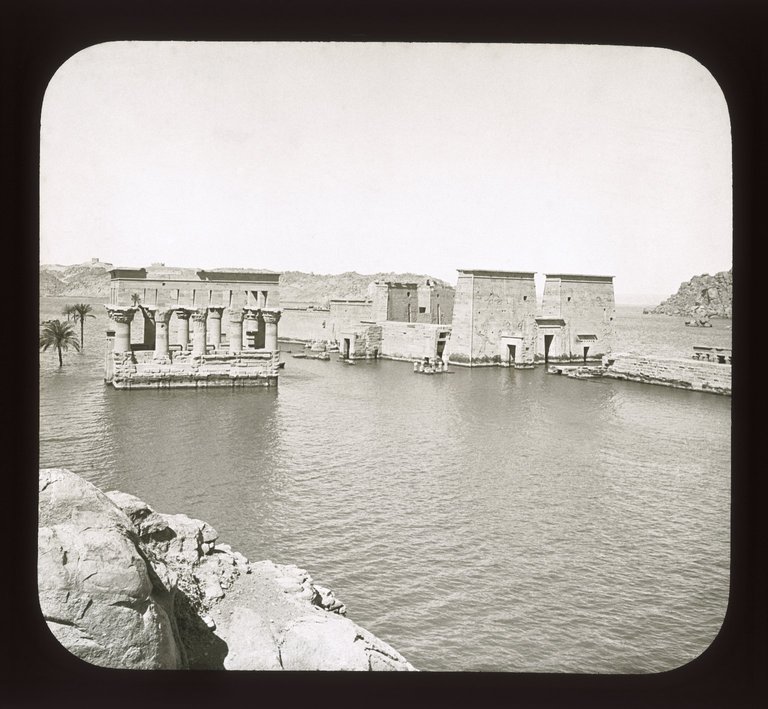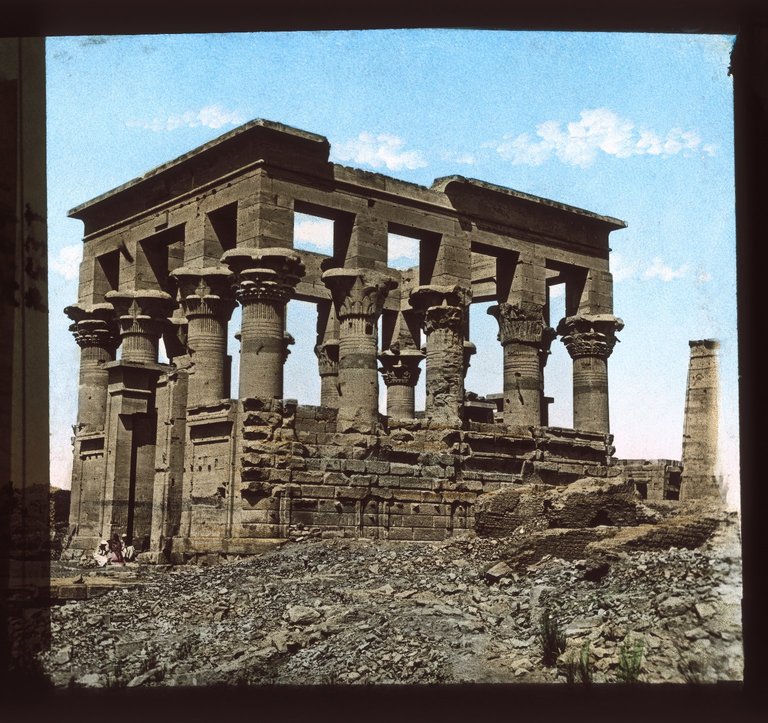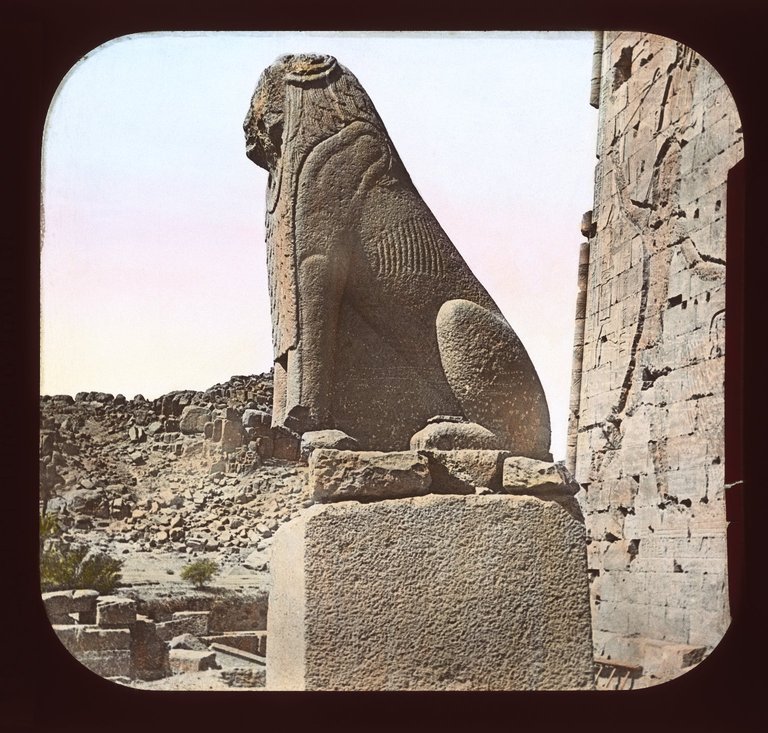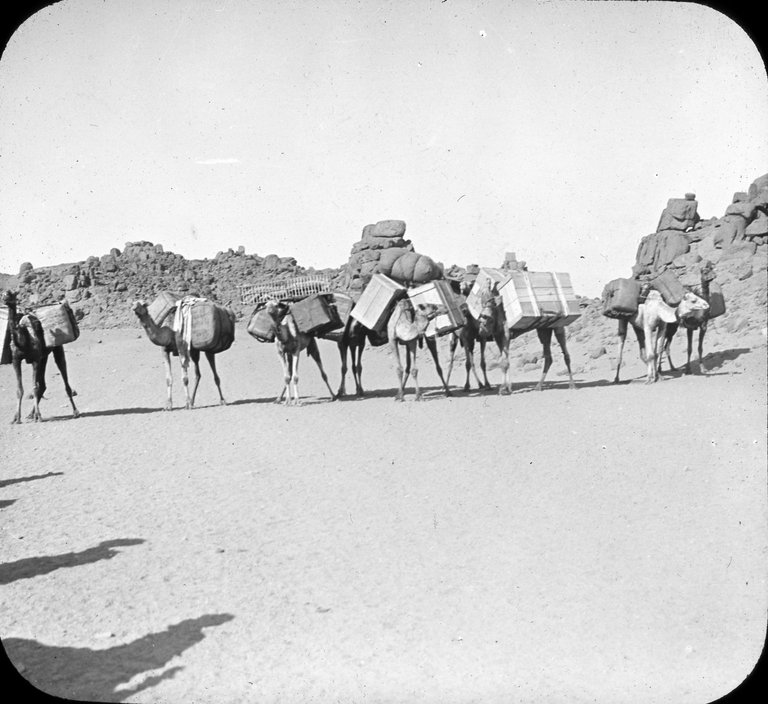In the 1960s, after the Nasser Regime disastrously insisted on building the Aswan High Dam, Nubia was submerged and with it lost a lot of Nubian heritage and more architectural marvels got buried under water than they were able to save. An international project was initiated by UNESCO in order to save what can be saved. A gargantuan project to say the least!
Among the lucky ones was the Philae complex. In 1902 the British built the Aswan Low Dam, which spelled the beginning of all of Philae’s yet to come calamities. The dam was heightened twice, from 1907–12 and from 1929–34, and the island of Philae was nearly always flooded. In fact, the complex was not underwater only when the dam’s sluices were open, from July to October. [Source: Wikipedia]. The High Dam, however, would prove to be an even more of a threat, as the rising water would have permanently submerged the island that the temple was built on.
Up until the time of Description de l’Égypte one could still see the vividness of the colours in all their brilliance, owing to the dryness of the climate. You can still hints of these colours high up towards the capitals of the columns and in some inscriptions.
By Victorian times, Philae had begun to attract much attention of Egyptologists, celebrities, and would-be explorers alike. In her book, A Thousand Miles up the Nile, that was published after her return from a winter expedition up the Nile (1873-1874), British author Amelia Edwards brings the majesty of Philae to life like only a Victorian travelogue could.
The approach by water is quite the most beautiful. Seen from the level of a small boat, the island, with its palms, its colonnades, its pylons, seems to rise out of the river like a mirage. Piled rocks frame it on either side, and the purple mountains close up the distance. As the boat glides nearer between glistening boulders, those sculptured towers rise higher and even higher against the sky. They show no sign of ruin or age. All looks solid, stately, perfect. One forgets for the moment that anything is changed. If a sound of antique chanting were to be borne along the quiet air–if a procession of white-robed priests bearing aloft the veiled ark of the God, were to come sweeping round between the palms and pylons–we should not think it strange. A Thousand Miles up the Nile
(1877)
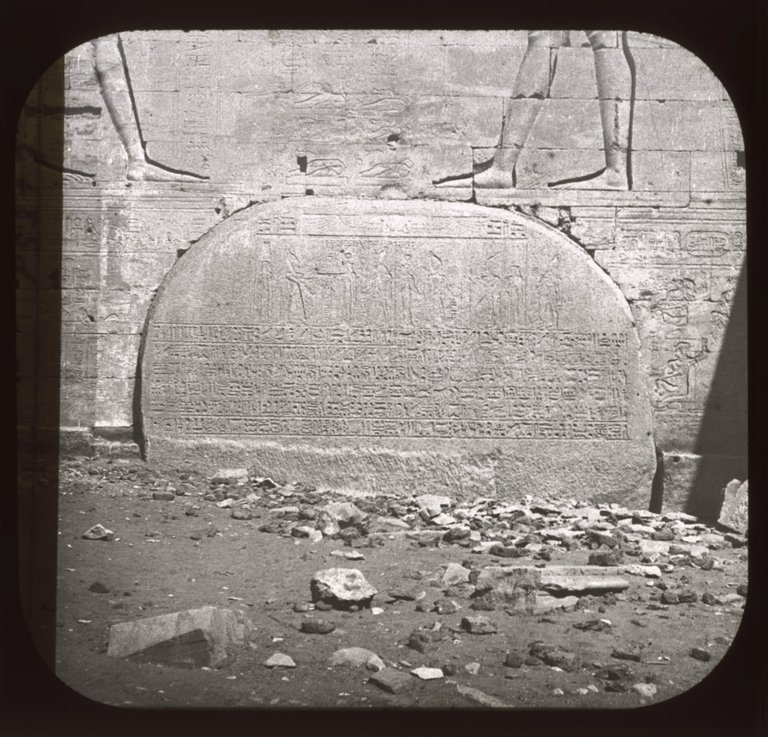
Egypt: The great temple gallery showing the Ptolemaie Land Grant by Brooklyn Museum, taken sometime in 1900.
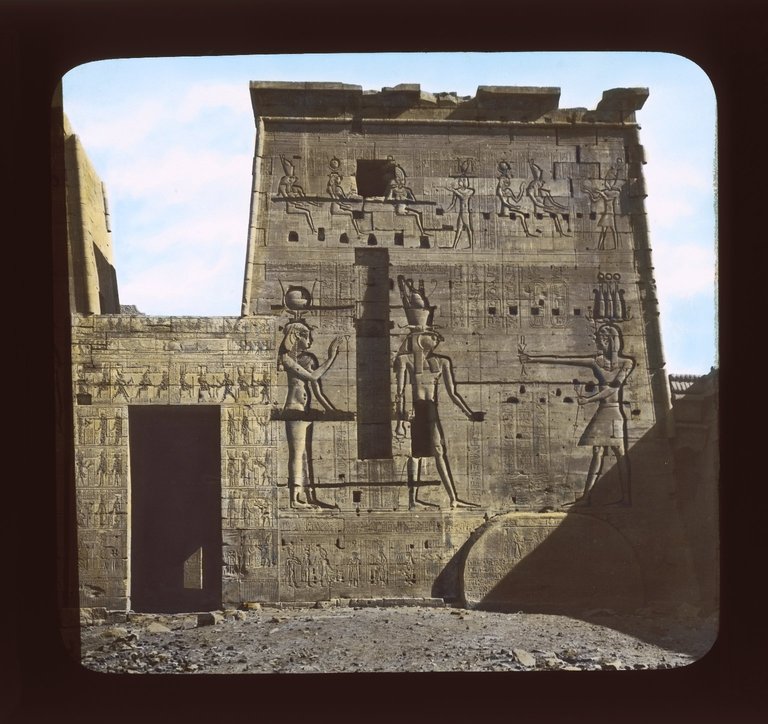
Egypt: Pylon at Philae featuring Hathor, Horus, and Ptolemy XII by Brooklyn Museum, taken sometime in 1900.

